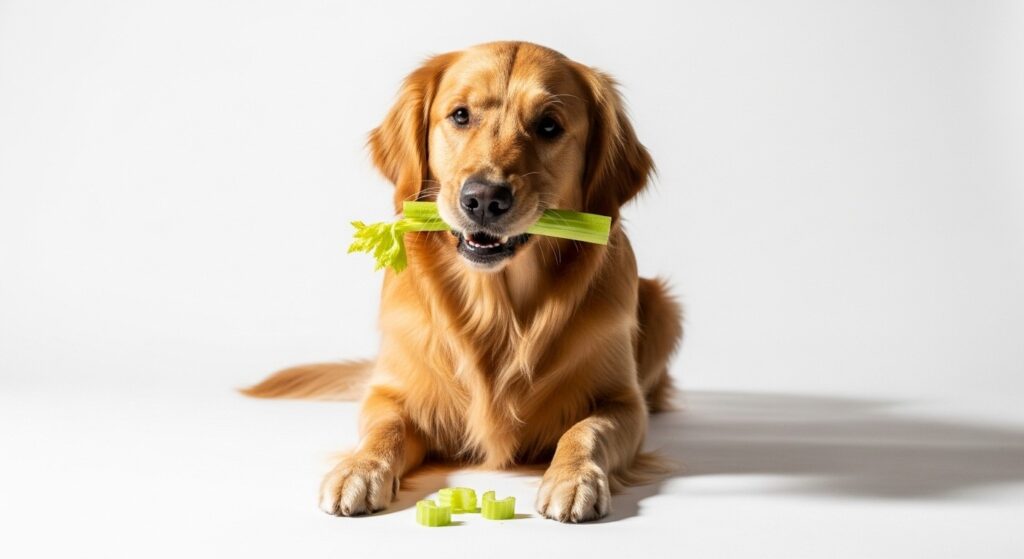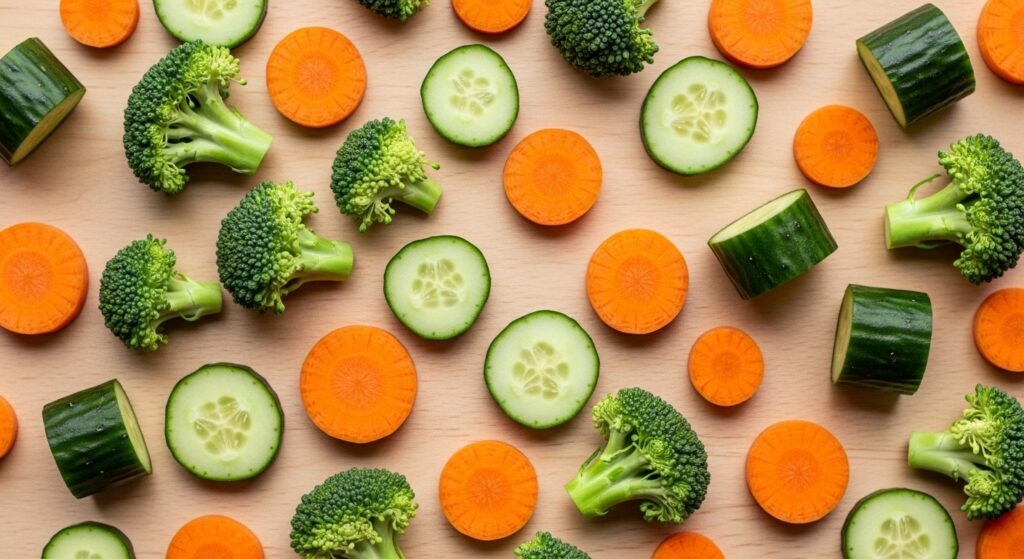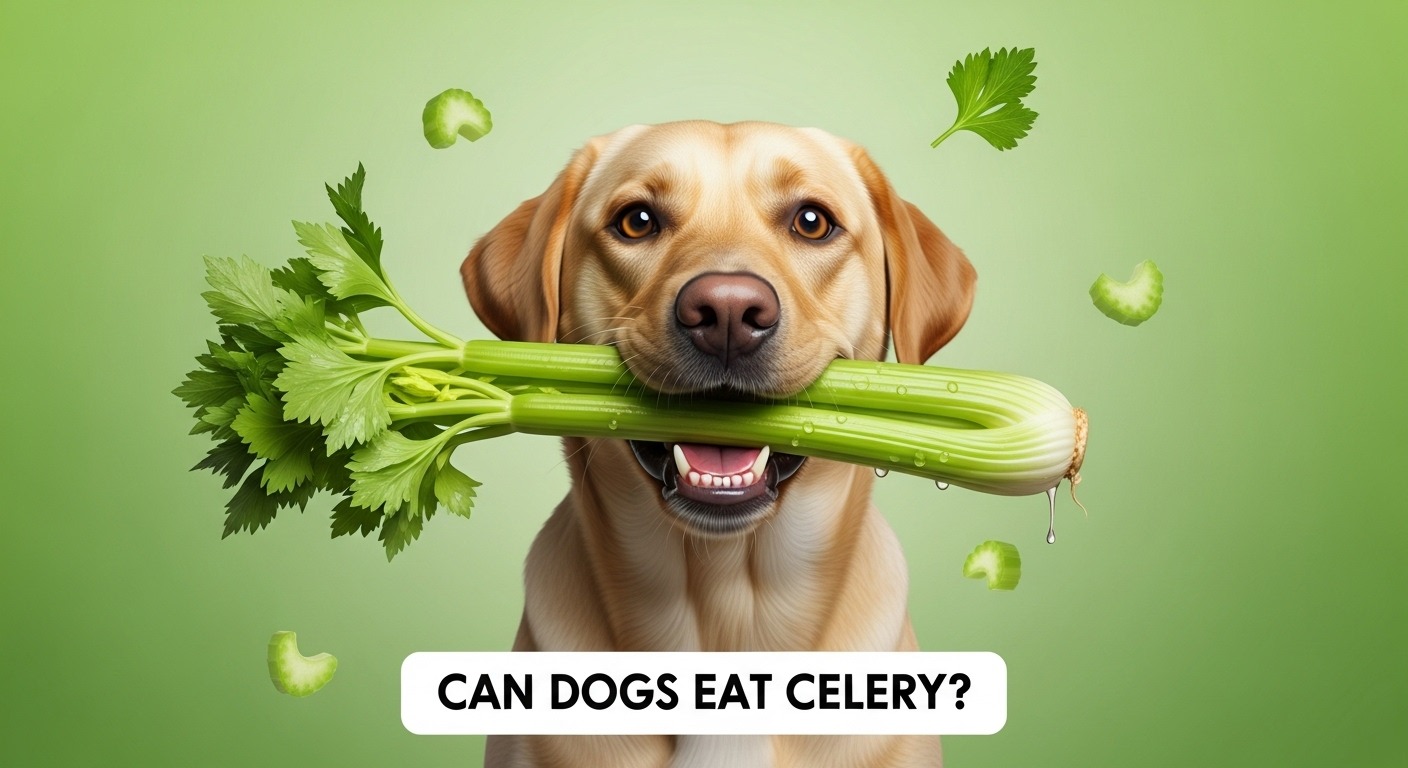Dogs often beg for table scraps. Celery might catch your eye as a healthy option. This guide covers if celery works for dogs. It looks at pros, cons, and ways to serve it.
Is Celery Safe for Dogs?
Yes. Dogs can have celery. Vets agree it poses no harm when given right. It counts as a vegetable treat. Always check with your vet first. Some dogs may react differently.
Celery has no toxic parts for dogs. Stalks, leaves, and all suit them. Wash it well to remove dirt or chemicals.
Health Benefits of Celery for Dogs
Celery brings good nutrients. It holds vitamins A, C, and K. These help eyes, immune system, and blood clotting. Potassium in it aids heart function. Folate and manganese support cell health.
High water content keeps dogs hydrated. About 95% water makes it refreshing on hot days. Low calories help with weight control. One stalk has around six calories.
Fiber promotes gut health. It eases digestion and prevents constipation. Crunchy texture scrapes teeth. This reduces plaque and freshens breath.
Antioxidants fight cell damage. They may lower swelling and disease risk.
- Hydration boost: Great for active dogs.
- Weight aid: Swap for high-calorie treats.
- Dental help: Acts like a natural brush.
For more on safe foods, try our pet food safety checker.
Potential Risks and Side Effects
Celery stays safe in small amounts. Too much causes issues. High fiber leads to gas or loose stools. Start slow to test tolerance.
Choking is a concern. Long strings or big pieces block airways. Cut into tiny bits, especially for small breeds.
Diuretic effect means more peeing. Celery’s compounds increase urine flow. Avoid large servings.
Pesticides linger on leaves. Choose organic if possible. Or remove leaves.
Allergies happen rarely. Watch for itching or swelling after first try.
If your dog shows symptoms like vomiting, use our pet symptom checker.
How to Prepare and Serve Celery to Dogs
Wash celery under running water. Remove any wilted parts. Cut stalks into small pieces. Size them to your dog’s mouth.
Raw celery gives crunch. Dogs like the texture. Cooked softens it. Steam without salt or oil.
Serve plain. No butter, spices, or dips. These add harm.
Ideas to try:
- Mix chopped celery in meals.
- Stuff in toys with safe spreads.
- Freeze pieces for cool treats.
Pair with dog-safe peanut butter. Check for no xylitol. Spread thin on slices.
For raw sticks: Fine if cut short. Whole sticks risk choking.
Leaves are okay. They hold extra nutrients but more chemicals. Trim if worried.

How Much Celery Can Dogs Have?
Treats make up 10% of daily calories max. Base on dog size.
Small dogs: Half a stalk per day.
Medium dogs: One stalk.
Large dogs: Up to two stalks.
Split into servings. Track all treats. Overfeeding upsets balance.
Ask your vet for exact amounts. They factor age, health, and diet.
Curious about age effects? Use our pet age calculator.
Frequently Asked Questions
Can Dogs Eat Raw Celery?
Yes. Raw keeps nutrients and crunch. Cut small to avoid choke.
Are Celery Leaves Safe for Dogs?
Yes. Leaves have most vitamins. But they collect pesticides. Rinse well or skip.
Is Celery Good for Dogs’ Teeth?
Crunch helps clean teeth. It scrapes off buildup. Not a full dental fix. Use with brushing.
Can Dogs Eat Celery Every Day?
In small bits, yes. Not as main food. Vary treats for balance.
What if My Dog Eats Too Much Celery?
May get stomach upset or more bathroom trips. Call vet if severe.
Can Puppies Eat Celery?
Yes, after weaning. Start tiny amounts. Their guts adjust slower.
For more questions, see what fruits can dogs eat.
Alternatives to Celery for Dogs
If celery doesn’t suit, try other veggies.
- Carrots: Crunchy and sweet. Good for teeth.
- Cucumbers: High water, low cal.
- Broccoli: Small amounts for vitamins. See can dogs eat broccoli.
- Green beans: Fiber-rich and safe.
Avoid onions, garlic, or grapes. These harm dogs.
Check breeds for diet fits with our pet breed finder quiz.

Final Thoughts
Celery offers a crisp, healthy snack for dogs. It adds variety without many calories. Prepare it safely. Watch portions. Your dog gains from the nutrients. Always put balanced meals first.
For more tips, read can dogs eat cucumbers or can dogs eat pineapple.
